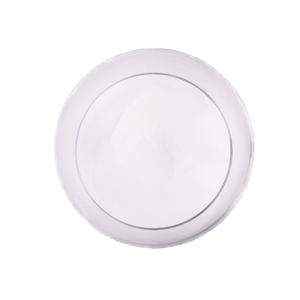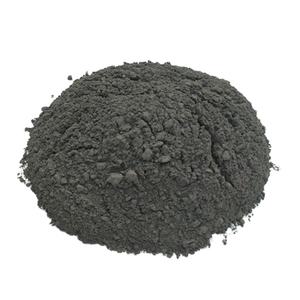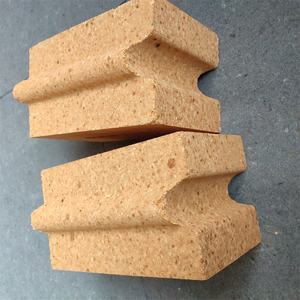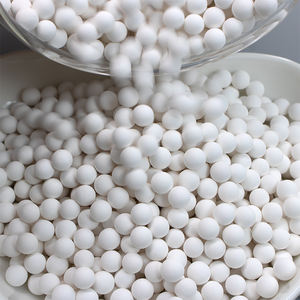Professional industry ceramic supplier, silicon nitride, silicon carbide, aluminum nitride and any other kinds of ceramics.
PRODUCT PARAMETERS
Description
Overview of Porous Alumina Foam Ceramic for Molten Aluminium Refractory Ceramic Parts and Raw Materials
Porous Alumina Foam Ceramic for Molten Aluminium Refractory Ceramic Parts and Raw Materials are non-metallic substances designed to withstand extreme temperatures exceeding 1,000°C, along with harsh chemical and physical stresses. They are essential for the inner linings of industrial furnaces, kilns, reactors, and incinerators, providing critical thermal insulation and structural integrity in processes ranging from metal and glass manufacturing to power generation.
Features of Porous Alumina Foam Ceramic for Molten Aluminium Refractory Ceramic Parts and Raw Materials
-
High-Temperature Resistance: Maintain structural strength and stability at temperatures often exceeding 1500°C.
-
Excellent Thermal Shock Resistance: Withstand rapid heating and cooling cycles without cracking or spalling.
-
Chemical Inertness: Resist corrosion and degradation from slags, molten metals, and acidic or basic environments.
-
High Mechanical Strength: Possess considerable load-bearing capacity at operating temperatures.
-
Low Thermal Conductivity: Provide effective insulation to improve energy efficiency and protect furnace structures.
-
Abrasion Resistance: Withstand erosion from solid materials and gas flows.
Specification of Porous Alumina Foam Ceramic for Molten Aluminium Refractory Ceramic Parts and Raw Materials
Porous alumina foam ceramic serves molten aluminum applications well. This material is made mostly from alumina powder. It has many tiny holes connected throughout. This open structure is key. The foam ceramic allows gases to escape. It traps solid impurities too. Molten aluminum flows through it smoothly. The ceramic handles very high temperatures easily. It won’t crack under sudden temperature changes. This heat resistance is vital near molten metal.
The foam structure is strong despite being mostly air. It supports its own weight under harsh conditions. Long service life saves money. You get consistent performance batch after batch. Typical porosity is high, often 75% to 85%. Pore sizes vary. Common sizes are 5 PPI, 10 PPI, or 20 PPI. Smaller pores filter finer particles. Larger pores offer faster flow. Choose the pore size for your specific job.
This ceramic works for many jobs. It is excellent for inline filtration. Place it in the metal path before casting. It cleans the aluminum stream effectively. The foam also works well inside degassing boxes. It helps remove hydrogen gas. Use it as a diffuser plate too. It spreads molten metal evenly. The material withstands chemical attack from aluminum. It lasts a long time without degrading.
Raw materials matter greatly. High-purity alumina powder is essential. The powder must be very fine. This ensures a strong, uniform foam structure. The production process involves coating a polymer foam template. The template burns away during firing. This leaves the porous ceramic skeleton. Major producers supply quality raw materials globally. Consistent quality ensures reliable ceramic parts.
Applications of Porous Alumina Foam Ceramic for Molten Aluminium Refractory Ceramic Parts and Raw Materials
Porous alumina foam ceramic solves big problems handling hot liquid aluminum. This special material works well in tough places like foundries and aluminum plants. It lasts a long time under extreme heat and harsh chemicals. Liquid aluminum is very hot and damaging. Normal materials break down quickly. This foam ceramic handles it much better.
The main job is filtering dirty molten aluminum. Impurities weaken the final metal. This ceramic filter traps oxides, carbides, and other junk. Cleaner aluminum makes stronger, better quality castings. It also cuts down on waste. Factories save money. The open foam structure catches tiny particles. Metal flows through smoothly. Production doesn’t slow down.
This alumina ceramic is also great for parts touching molten aluminum. Think crucibles, tubes, and liners. It resists attack from the liquid metal. It doesn’t crack easily from sudden temperature changes. Parts last longer. Replacing them less often cuts costs. Less downtime happens. The foam structure also helps insulate. It keeps heat where it’s needed. Energy use goes down.
Raw porous alumina foam ceramic material matters too. High purity is key. It must be stable and strong. Good raw materials make reliable finished products. Plants need consistent performance. This ceramic delivers. It withstands the heat and the chemical attack day after day. Using it improves efficiency and final product quality. It’s a practical solution for demanding aluminum processing.
Company Profile
Tanki New Materials Co.Ltd. focus on the research and development, production and sales of ceramic products, serving the electronics, ceramics, chemical and other industries. Since its establishment in 2015, the company has been committed to providing customers with the best products and services, and has become a leader in the industry through continuous technological innovation and strict quality management.
Our products includes but not limited to Aerogel, Aluminum Nitride, Aluminum Oxide, Boron Carbide, Boron Nitride, Ceramic Crucible, Ceramic Fiber, Quartz Product, Refractory Material, Silicon Carbide, Silicon Nitride, ect. please feel free to contact us.

Payment Methods
T/T, Western Union, Paypal, Credit Card etc.
Shipment Methods
By air, by sea, by express, as customers request.
5 FAQs of Porous Alumina Foam Ceramic for Molten Aluminium Refractory Ceramic Parts and Raw Materials
What is porous alumina foam ceramic?
It is a special ceramic material. It has many tiny holes. These holes go through the material. It is made mostly from aluminum oxide. It looks like a sponge but is very hard. It handles extreme heat well.
Why use it for molten aluminum?
Molten aluminum is very hot. It can damage many materials. Porous alumina foam ceramic handles this heat. It does not melt or react with the aluminum. It keeps its shape. This is important for safety and performance.
How does it filter molten aluminum?
The molten metal flows through the foam. The tiny holes trap solid bits. These bits are impurities like oxides or hard particles. Clean aluminum flows out the other side. This makes the final aluminum product better quality.
What are the main benefits?
It lasts a long time in the furnace. It resists breaking from sudden temperature changes. It filters effectively. It is strong under pressure. It improves the metal quality. This saves money over time.
Where is this ceramic used?
It is used inside furnaces holding molten aluminum. It makes filters for cleaning the metal. It makes parts like diffusers or baffles. It insulates hot areas. It protects other furnace parts. It is a key material for aluminum producers.
REQUEST A QUOTE
RELATED PRODUCTS

Refractory Cement Low Cement Refractory Castable High Alumina Castables Refractory Material

High Alumina Refractory High Strength High Alumina Castables High Quality High Alumina Refractory Castable

High Heat Resistance Refractory Cordierite Mullite Ceramic Part For

High-Purity Graphite Crucible High-Temperature Resistant Customized Melting Molds Composed High-Performance Refractory

25/50mm Thickness Ceramic Fiber Blanket 1260 Degree Celsius 128kg M3 Refractory Ceramic Fiber Wool Blanket



